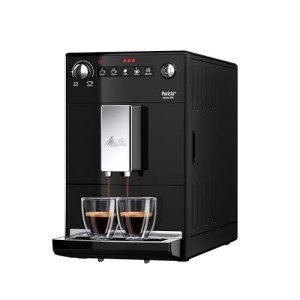The Rise of Home Espresso Machines: A Comprehensive Guide
As coffee fans continue to seek fresh and flavorful brews in the house, the popularity of home espresso machines has surged recently. No longer simply the domain of coffee shops and coffeehouse, these machines empower individuals to craft barista-quality espresso drinks from the convenience of their cooking areas. This article will check out the different types of home espresso machines, their functions, and factors to consider for picking the right one. In addition, it will supply a selection of FAQs to help potential buyers make informed choices.
Types of Home Espresso Machines
Home espresso machines can be categorized into numerous classifications based on their mechanisms and user-friendliness. Each type has its unique features, pros, and cons.
| Type | Description | Pros | Cons |
|---|---|---|---|
| Manual Espresso Machines | Requires the user to by hand control the brewing process, including methods like pulling a lever to produce pressure. | - Complete control over brewing procedure - Compact style | - Requires skill and practice - Time-consuming |
| Semi-Automatic Machines | Machine automates water flow and pressure, however the user still manages the dosing and duration of the developing procedure. | - Balance of automation and control - Versatile | - Learning curve for improving techniques |
| Completely Automatic Machines | Automates the whole brewing process, from grinding to developing, often with programmable settings for tailored drinks. | - Extremely easy to use - Quick and convenient | - Less control over the developing process - Higher cost point |
| Pill or Pod Machines | Utilizes pre-packaged espresso capsules or pods to develop coffee quickly and easily. | - Extremely simple to use - Minimal cleanup | - Limited flavor variety - More costly per cup than ground coffee |
| Super-Automatic Machines | Integrates functions of totally automatic machines with integrated grinders, allowing users to brew entire bean espresso and milk-based drinks with one touch. | - All-in-one benefit - Ideal for milk-based beverages | - Often the most costly - Can be large |
Functions to Consider
When selecting a home espresso machine, potential buyers need to think about the following functions to ensure they pick a machine that satisfies their requirements:
Grinder Type:
- Built-in grinders can offer fresher premises however may require more upkeep.
- Different grinders permit more personalization of grind size.
Pressure:
- Look for machines that produce a minimum of nine bars of pressure, which is ideal for brewing espresso.
Water Temperature Control:
- Machines with adjustable temperature level settings permit for better extraction of flavor from beans.
Milk Frothing Options:
- Consider whether you desire a manual steam wand for frothing or an automatic milk frother for convenience.
Relieve of Cleaning:
- Machines with removable parts and self-cleaning functions considerably reduce cleanup time.
Size and Design:
- Ensure the machine fits easily in your kitchen and lines up with your aesthetic preferences.
Budget:
- Set a budget before starting your search, as prices can vary substantially from affordable designs to high-end machines.
Benefits of Home Espresso Machines
Owning a home espresso machine uses many advantages:
- Cost-Effective: Over time, developing espresso in your home can save coffee enthusiasts cash compared to regular coffee shop sees.
- Personalization: Users can explore different beans, grind sizes, and brewing methods to discover their perfect cup.
- Convenience: The ability to brew espresso whenever eliminates the need to go out to a café, particularly useful throughout late nights or early mornings.
- Quality assurance: With a home machine, people have total control over the quality of components and brewing processes.
Downsides of Home Espresso Machines
Nevertheless, there are some disadvantages to consider:
- Initial Investment: High-quality espresso machines can be expensive, needing a considerable in advance financial investment.
- Knowing Curve: Mastering the art of espresso developing can take time and practice, which might be daunting for newbies.
- Maintenance: Like any device, espresso machines require routine cleaning and upkeep to ensure ideal efficiency.
FAQs
1. What is the best type of home espresso machine for newbies?
Answer: For newbies, a semi-automatic machine is frequently suggested as it uses a balance in between control and automation, allowing you to find out the essentials without frustrating intricacy.
2. Just how much should I invest in a home espresso machine?
Response: Entry-level machines can begin around ₤ 100 to ₤ 300, while higher-end designs can vary from ₤ 500 to over ₤ 2000. It's vital to set a budget based on your expected usage and desired features.
3. Do Compact Espresso Machines require a different grinder?
Answer: While some espresso machines include built-in mills, buying a different grinder enables greater modification and makes sure better quality grounds.
4. How frequently should I clean my espresso machine?
Response: Cleaning frequency can vary by machine type, but it's normally suggested to clean up the machine after each use and perform deep cleanings weekly or monthly, depending upon use.
5. Can I make milk-based drinks with any espresso machine?
Response: Not all machines come with milk frothing abilities. If you enjoy drinks like lattes or cappuccinos, look for a machine with a steam wand or automatic frother.
Home espresso machines are transforming the way coffee aficionados enjoy their cherished brews. With various types and advanced functions offered in the market, there is something for everybody. Whether it's the joy of creating distinct dishes or just appreciating the ideal shot of espresso, investing in a home espresso machine can boost both the coffee-drinking experience and the lifestyle for coffee lovers all over. As with any investment, it is essential to weigh the advantages versus the prospective downsides and choose a machine that perfectly fits both your lifestyle and preferences.

